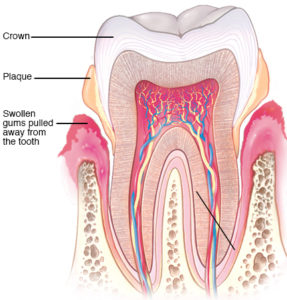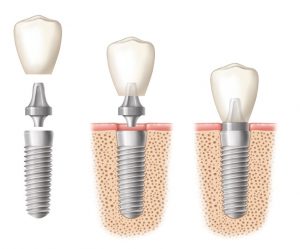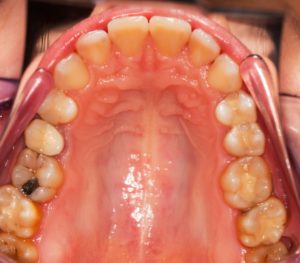Header logo
header top contact widget
Blog Archives
Recent Posts
Categories
Archives
- September 2024
- August 2024
- July 2024
- June 2024
- May 2024
- April 2024
- March 2024
- February 2024
- January 2024
- December 2023
- November 2023
- October 2023
- September 2023
- August 2023
- July 2023
- June 2023
- May 2023
- April 2023
- March 2023
- February 2023
- January 2023
- December 2022
- November 2022
- October 2022
- September 2022
- August 2022
- July 2022
- June 2022
- May 2022
- April 2022
- March 2022
- February 2022
- January 2022
- December 2021
- November 2021
- October 2021
- September 2021
- August 2021
- July 2021
- June 2021
- May 2021
- April 2021
- March 2021
- February 2021
- January 2021
- December 2020
- November 2020
- October 2020
- September 2020
- August 2020
- July 2020
- June 2020
- May 2020
- April 2020
- March 2020
- February 2020
- January 2020
- December 2019
- November 2019
- October 2019
- September 2019
- August 2019
- July 2019
- June 2019
- May 2019
- April 2019
- March 2019
- February 2019
- January 2019
- December 2018
- November 2018
- October 2018
- September 2018
- August 2018
- July 2018
- June 2018
- May 2018
- April 2018
- March 2018
- February 2018
- January 2018
- December 2017
- November 2017
- October 2017
- September 2017
- August 2017
- July 2017
- June 2017
- May 2017
- April 2017
- March 2017
- February 2017
- January 2017
- December 2016
- November 2016
- October 2016
- September 2016
- August 2016
- July 2016
- June 2016
- May 2016
- April 2016
- March 2016
- February 2016
- January 2016
- December 2015
- November 2015
- October 2015
- September 2015
- August 2015
- July 2015
- June 2015
- May 2015
- April 2015
- March 2015
- February 2015
- January 2015
- December 2014
- November 2014
- October 2014
- September 2014
- August 2014
- July 2014
- June 2014
- May 2014
- April 2014
- March 2014
- February 2014
- January 2014
- December 2013
- November 2013
- October 2013
- September 2013
- August 2013
- July 2013
- June 2013
- May 2013
- April 2013
- March 2013
- February 2013
- January 2013
- December 2012
- November 2012
- October 2012
- September 2012
- August 2012
- July 2012
- June 2012
Protect Your Heart. Start With Your Smile!
Posted on Jul 17, 2019 by William J. Claiborne, DDS MS
According to a report on the health of Americans (published by the Centers for Disease Control & Prevention, or ‘CDC’), it is estimated that over 47 percent have some form of gum disease. Although we all aspire to have a smile that is appealing, it is what lies beneath the teeth and gums that can reek havoc on one’s overall health.

Signs of gum disease
Over time, inadequate daily oral hygiene enables an overload of bacteria in the mouth. For people who have habits such as smoking, unhealthy diets, and alcohol consumption, their vulnerability is even more susceptible to this bacterial buildup.
This is also true for people as they age. Aging contributes to a reduced ability to produce saliva, the mouth’s oral rinsing agent. When saliva flow fails to ‘wash away’ bacteria at sufficient levels, the accumulation runs rampant.
Oral bacteria are living, eating, and reproducing organisms. They thrive on rotting food particles caught between teeth. They attack gum tissues and tooth enamel. Eventually, they can work their way down tooth roots and attack the bones and tendons that support teeth.
What’s even scarier is the fact that these infectious critters can enter the bloodstream. This potent bacteria are now associated with a number of serious health conditions due to their ability to trigger systemic inflammation.
When the gum tissues can no longer combat the onslaught of bacteria, there can be very few signs of periodontal (gum) disease initially. Signs that emerge are typically frequent bad breath along with swollen, tender and beefy red gums that bleed when you brush. As they grow in number, the gum tissues become weaker and they can penetrate the bloodstream.
According to the American Academy of Periodontology (www.perio.org),
“Several studies have shown that periodontal disease is associated with heart disease. While a cause-and-effect relationship has not yet been proven, research has indicated that periodontal disease increases the risk of heart disease.
“Scientists believe that inflammation caused by periodontal disease may be responsible for the association.
“Periodontal disease can also exacerbate existing heart conditions. Patients at risk for infective endocarditis may require antibiotics prior to dental procedures. Your periodontist and cardiologist will be able to determine if your heart condition requires use of antibiotics prior to dental procedures.”
For this reason, cardiologists are more often advising their patients to be evaluated by a periodontist prior to heart surgery. As mentioned above, gums that bleed are a sign of gum disease. These oral bacteria, given an opportunity to enter the bloodstream, are able to travel anywhere, including the heart. They can reach the heart muscle and cause a severe infection.
For decades, researchers have probed the link between gum disease and cardiovascular health. People with gum disease (also known as periodontal disease) have two to three times the risk of having a heart attack, stroke or other serious cardiovascular event.
Acting as a contributing factor to heart disease is highly serious. Yet, the risks associated with gum disease don’t stop there. Research has shown this potent oral bacteria can set a path of destruction into motion. It has been linked to some cancers, stroke, diabetes, arthritis, preterm babies, impotency, and even Alzheimer’s.
Twice-daily brushing and daily flossing takes mere minutes and is inexpensive to do. Seeing a dentist every 6 months for oral exams and cleanings saves an individual far more by preventing problems than they cost. Yet, too many adults fail to devote the investment to this necessary part of a healthy lifestyle.
An estimated 65 percent of adults ages 18 – 64 see a dentist only once a year. Approximately 55 percent of adults brush their teeth twice a day, which is too little. (https://www.reference.com/health/many-times-day-people-brush-teeth-34d1104798029b7a) I believe it would be jolting to most adults to view dental floss under a microscope after their teeth have been flossed.
As an Asheville periodontal specialist, I have an up-close view of the damaging affects of insufficient oral hygiene. It often results in tooth loss, which is not a natural part of the aging process, as some people believe. Having your natural teeth for a lifetime is more than achievable and has even been shown to add to one’s lifespan (by up to ten years).
If you’ve failed to be fully committed to your oral health, there is no better time to begin than the present. Start with a thorough periodontal examination. Call 828-274-9440.
If dental fears have prevented you from having regular dental care, consider beginning with a consultation. This occurs in a comfortable, private consultation room that is removed from the clinical side of the office. This will be a friendly, informative conversation and you will not be asked to sit in a treatment chair during this visit.
Let’s protect you, top to bottom, beginning with your smile!
Dental Implants – Many Types Available For Different Needs & Preferences
Posted on Jul 10, 2019 by William J. Claiborne, DDS MS
As a periodontist, an area of my dental specialty includes advanced training in the diagnosis and placement of dental implants. This specialized expertise provides implant patients with a high level of success in treatment outcome. It also offers patients a wider variety of choices when it comes to implant systems.
When dental offices offer dental implants, some general dentists refer the placement portion to a periodontal specialist. For their patient, this can mean a higher level of success, especially for complex needs.
For example, a patient who is missing a lot of bone mass (often due to missing natural teeth for many years) benefits from the specialized skills of our Asheville periodontal office. Another example is a patient who has lost teeth due to periodontal (gum) disease. Because a periodontist combines advanced skills in treating gum disease as well as in dental implants, these patients are given a ‘leg up’ when it comes to treatment success.
Dental implant diagnosis and placement skills can vary greatly when offered by general dentists. While some have taken extensive courses in implant dentistry, others may have taken a weekend course here and there. These are typically ‘hosted’ by a particular manufacturer who provides ‘training’ in a limited selection of implant types. In turn, this can limit the patient’s choices when relying on appropriate recommendations for his or her unique needs.
Now seen as the preferred option for tooth replacement, dental implants are available to accommodate various challenges and preferences. There are numerous choices available. Some of the more common include:
Traditional Dental Implants: In this process, dental implants includes a couple of stages. Implant placement is performed first. This involves small incisions in pre-selected placement points. These points are determined through computerized imaging, taking the guesswork out of the depth and angle of each implant placed. Once the implant is in proper position, the gum tissue is closed over the implant sites.
For a ‘healing period’ of 3-6 months, the bone grows around the implants to secure each in place. This process is referred to as ‘osseo-integration,’ which describes the bone growing around the implanted portion. The process is similar to a rope tied around the branch of a tree. Over time, the branch grows around the rope. Osseo-integration is similar to this but occurs at a much more rapid pace.
After several months, the implant sites are uncovered and a post is positioned inside each implant. Onto the posts, the replacement teeth are secured. Rest assured, during the healing phase, patients are able to wear their denture or partial comfortably. Once the final teeth are attached, patients can enjoy their ‘new’ smile along with the biting and chewing comfort like that of natural teeth.
Non-Removable Teeth Attached To Implants: In the past, the more affordable ‘full arch’ systems were typically those designed to support removable teeth. (An ‘arch’ replaces all upper or all lower teeth.) However, some people feel removable teeth are too similar to the denture they have (and detest). Although firmly secured, the chore of having to remove their new teeth to clean is undesirable to many people.
A number of implant systems are available, designed to provide non-removable options that are more affordable. For example, the All On 4 dental implant system is made to support non-removable teeth, often on just 4 implants. With the implanted portions placed at unique angles, these longer implants can fully distribute biting and chewing forces.
Another advantage of All On Four is their ability to be placed in minimal bone. This is good news for people who are long-time denture wearers and were told they have too little bone to support implants. Or, they may have been advised to have bone grafts to rebuild the bone to an adequate height. This adds time and expense to implant treatment. Often, the All On 4 design is able to overcome this obstacle.
‘Same-Day’ Dental Implants: With advanced implant systems and technology, implant placement and teeth attachment can be accomplished in a single day. Advanced implant designs can position implants in the jaw bone that are ready to support replacement teeth. With the replacement teeth created prior, the teeth may be attached without delay. In some cases, a previously-made denture or partial can be reconfigured to attach to newly placed implants. “Implants in a day” isn’t wise for all situations, however. This option should be diagnosed and performed by a skilled, experienced professional who understands both the requirements and limitations involved. Putting your care in the hands of an experienced, skilled and highly-trained dental specialist is the best way to achieve a successful outcome. Just a note – while these quick-&-easy procedures can sound appealing, be cautious of ‘clinic’ settings who promote same-day implants. For an optimal outcome, choose care where your individual needs are a priority, rather than corporate profit goals.
Modern implant dentistry is successful, safe, dependable and can provide nearly immediate benefits. As a dental specialist who has stayed on the cutting edge of implant dentistry’s techniques, technology and materials, I am pleased to witness the transformations our patients undergo after treatment.
Dental implants are designed to last a lifetime and the closest thing to the natural teeth you once had. Too, the restored ability to bite, chew, speak and laugh confidently and even sneeze without worry can provide a tremendous boost to one’s self-esteem, self-confidence.
The type of dental implant best suited for you can be determined after an examination and review of x-rays (we use Cone-Beam digital imaging). Call 828-274-9440 to begin with a private, no obligation consultation to discuss your best options.
A Spot In The Mouth May Resolve On Its Own, Or Not. Know When To React.
Posted on Jul 01, 2019 by William J. Claiborne, DDS MS
Having a sore spot in the mouth occurs from time to time. Biting the inside of the cheek, foods that are highly acidic, or stress can all lead to sores.
Some viruses and other conditions can contribute to worse problems, however. It is important to know what to look for when it comes to an unusual spot in the mouth. Knowing when to watch and when to see a dentist could be a literal lifesaver.
Fortunately, most sores in the mouth resolve on their own. These include…
Canker Sores
Small ulcers with a white or gray base and a red border. Unlike cold sores, canker sores appear inside the mouth. They are not contagious but their exact cause is uncertain. Some experts believe that immune system problems, bacteria or viruses may be involved. Fatigue, stress or allergies can increase the likelihood of a canker sore. A cut caused by biting the cheek or tongue, or reactions from hot foods or beverages may contribute to canker sore development. Intestinal problems, such as ulcerative colitis and Crohn’s disease, also seem to make some people more susceptible. Canker sores usually heal on their own after a week or so. Over-the-counter topical anesthetics, steroid preparations, and antimicrobial mouth rinses can provide temporary relief.
Cold Sores
Also called fever blisters or Herpes simplex, these are groups of fluid-filled blisters that often erupt around the lips, under the nose, or around the chin. Cold sores caused by herpes virus type 1 are very contagious. Herpes lesions look like multiple tiny fluid-filled blisters that are most common around the edge of the lips. An outbreak may follow a fever, sunburn, skin abrasions or emotional upset. Cold sore blisters usually heal in a week by themselves. Over-the-counter topical anesthetics can provide some relief. Prescription antiviral drugs may reduce the duration of these kinds of viral infections.
Leukoplakia
Leukoplakia cause one or more white patches or spots (lesions) to form inside the mouth. Most who have the condition are males between the age 50 – 70. Although leukoplakia can be caused by a rough tooth or an irregular surface on a denture or a filling, it is often associated with heavy smoking or other tobacco and heavy alcohol. In some cases, however, the cause cannot be determined. Leukoplakia is especially concerning because it can eventually develop into oral cancer.
What will NOT resolve on its own and requires prompt evaluation are changes to oral tissue that do not heal within 14 days. DO NOT DELAY! This is a symptom of Oral Cancer. Nearly 40,000 Americans are diagnosed with oral or oropharyngeal (throat) cancer each year. These cancers kill about 1 person every hour, every day.
Symptoms of Oral Cancer that are most common include:
• white or red patch of tissue
• lesion in the mouth
• difficulty or discomfort when swallowing
• persistent sore throat
• a lump or mass inside the mouth or neck
• wart-like mass
• numbness in the oral/facial region
The survival rate is one of the worst of all cancers, with only 57 percent estimated to be living 5 years from diagnosis. The death rate is higher than cervical cancer, Hodgkin’s lymphoma, laryngeal cancer, cancer of the testes, thyroid cancer, or skin cancer (malignant melanoma).
Although the death rate has seen a slight decrease since 1980, some symptoms do not emerge until the cancer has reached advanced stages. This is because lesions or discolorations that are early warning signs are not always visible, particularly in the back portion of the mouth (the oropharynx, the tonsils, and base of tongue), which can be an obstacle to early diagnosis and treatment.
This is yet another reason that keeping your regular oral hygiene exam and cleanings is so important. During these times, your dentist and hygienist look for unusual changes in the mouth that can indicate a problem. Please remember – NEVER wait until your scheduled appointment to have anything unusual examined.
Although a stubborn canker or cold sore may not be welcome, they tend to go away in a week or ten days. Again, if an unusual spot or sore is still present after two weeks, call our Asheville periodontal office at 828-274-9440 immediately for an appointment.


